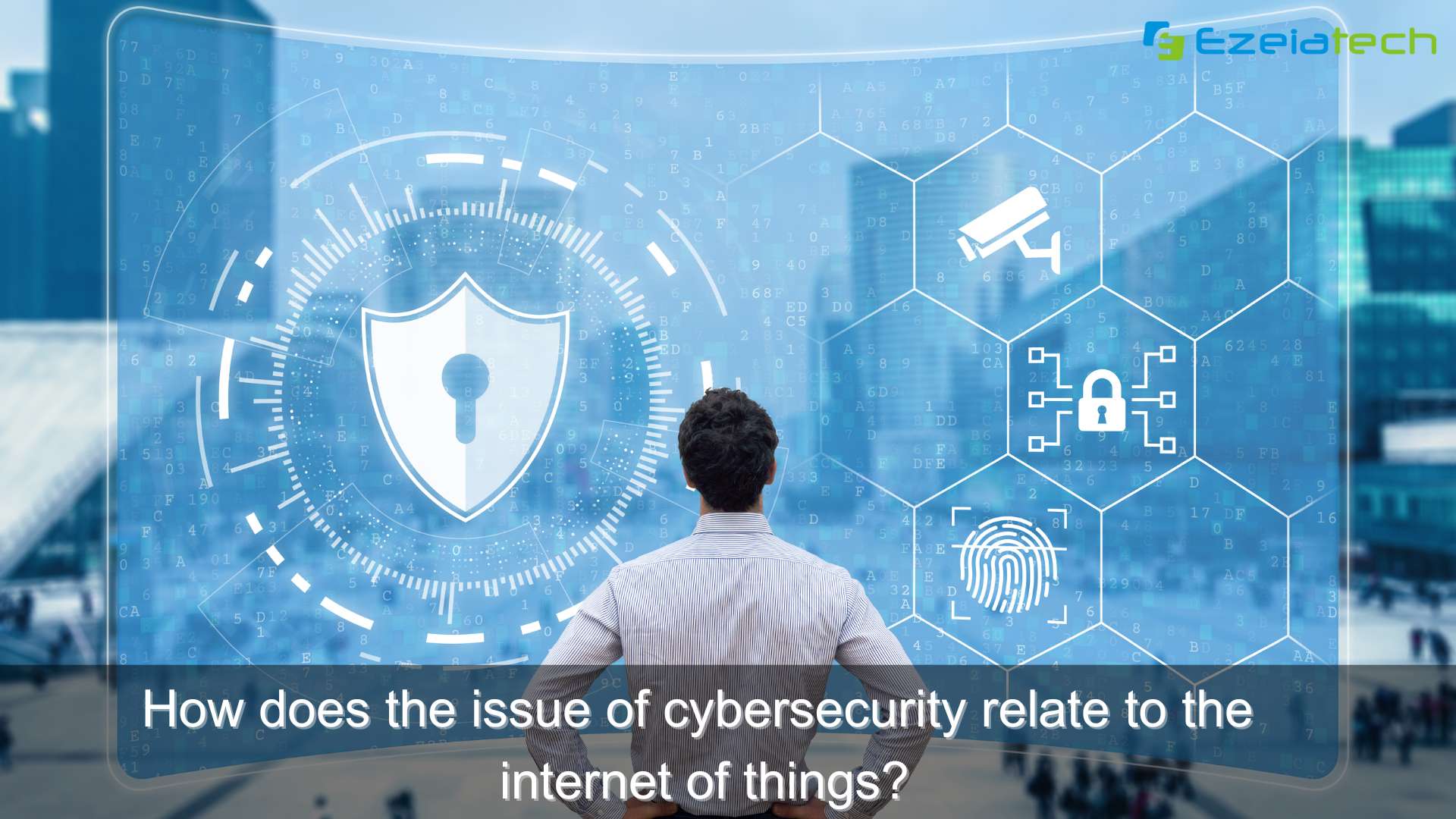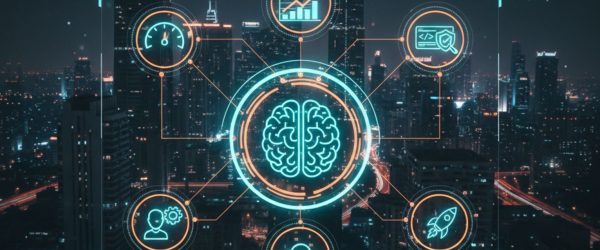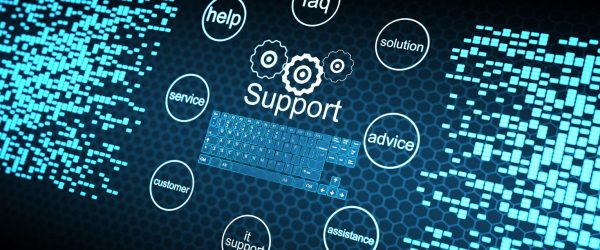In (Part-1), we introduced the Internet of Things (IoT) and stressed the critical need for cybersecurity in our digital age. We defined IoT and explored its examples and rapid adoption, while also examining the vulnerabilities and threats it faces. Part two will delve into strategies for mitigating these risks and enhancing security in the IoT ecosystem.
In (Part-2) we will discusses strategies and future trends for enhancing cybersecurity in the Internet of Things (IoT) domain. It covers collaborative efforts among stakeholders, integration of AI and blockchain technology, education for consumers, and emerging trends like edge computing and 5G adoption. It will highlights challenges such as diverse device ecosystems, privacy concerns, and the need for industry standards and cooperation.
I. Strategies to Enhance IoT Cybersecurity :
A. Collaborative Efforts among Stakeholders:
Explanation: Securing the Internet of Things (IoT) ecosystem requires collaboration among various stakeholders, including manufacturers, developers, regulators, and consumers. Each entity plays an important role in ensuring the security of IoT devices and networks.
Manufacturers: Applying security-by-design principles during the development phase of IoT devices. This involves embedding security features into the hardware and software of devices to prevent vulnerabilities.
Developers: Building secure applications and firmware for IoT devices, conducting regular security audits and vulnerability assessments, and promptly addressing identified vulnerabilities.
Regulatory: Establishing and enforcing rules and standards for IoT security to ensure that manufacturers comply with minimum security requirements. This may include certification programs or industry guidelines.
Consumers: Be vigilant about the security of the IoT devices they purchase, regularly updating firmware and software, using strong passwords, and being cautious about granting permissions and sharing data.
B. Integration of AI and Machine Learning for threat detection:
Explanation: AI and machine learning technologies can be employed to enhance threat detection capabilities in IoT environments. These technologies can analyze large amounts of data generated by IoT devices in real time, identify abnormal behavior patterns, and detect potential security threats.
Anomaly detection: AI algorithms can learn the general behavioral patterns of IoT devices and networks, allowing them to detect deviations that may indicate security breaches or malicious activities.
Predictive analytics: Machine learning models can analyze historical data to predict potential security threats and proactively mitigate risks before they escalate.
Adaptive security measures: AI-powered systems can dynamically adjust security policies and responses based on emerging threats and changing conditions in the IoT environment.
C. Implementation of Blockchain Technology for Enhanced Security:
Explanation: Blockchain technology provides a decentralized and immutable ledger that can enhance the security and integrity of IoT data and transactions. By leveraging blockchain, the IoT ecosystem can ensure data authenticity, integrity, and privacy.
Data integrity: Blockchain provides tamper-proof record-keeping, preventing unauthorized changes to IoT data.
Secure transactions: Blockchain-based smart contracts enable secure and automated transactions between IoT devices without the need for intermediaries, reducing the risk of fraud or manipulation.
Identity management: Blockchain can facilitate secure identity management for IoT devices, ensuring that only authorized devices can access data or participate in transactions.
Decentralization: By distributing data across a network of nodes, blockchain reduces the risk of single points of failure and increases resilience against cyber attacks.
D. Education and awareness campaigns for consumers and businesses:
Explanation: Educating consumers and businesses about the importance of IoT security and best practices can significantly improve the cybersecurity posture and reduce the likelihood of security breaches.
Awareness Programs: Providing educational resources, workshops, and training sessions to raise awareness of common IoT security risks, such as default passwords, insecure configurations, and phishing attacks.
Best Practices: Promote best practices for securing IoT devices, such as regularly updating firmware and software, using strong passwords, enabling encryption, and disabling unnecessary features.
Risk Mitigation Strategies: Educating consumers and businesses about the potential consequences of IoT security breaches and empowering them to take proactive measures to mitigate risks and protect sensitive data.
I. Future Trends in IoT Cyber Security:
A. IoT Landscape and Development of Emerging Technologies:
Continued growth of IoT: The IoT landscape is expected to expand rapidly with the integration of more devices into networks in various sectors such as healthcare, transportation, and smart cities.
Integration of edge computing: As IoT devices generate large amounts of data, there is a tendency to process the data closer to the source (edge computing), which creates new security challenges and opportunities.
Adoption of 5G networks: The rollout of 5G networks will increase connectivity for IoT devices, but will also introduce new security considerations due to increased bandwidth and network complexity.
B. Advances in Cyber Security Solutions:
Advanced encryption and authentication methods: With the evolution of encryption algorithms and authentication protocols, IoT devices can benefit from more robust security measures to protect data and communications.
Use of Artificial Intelligence (AI) and Machine Learning (ML): AI and ML algorithms can enhance threat detection capabilities by analyzing patterns and anomalies in IoT data traffic, thereby improving cybersecurity protection.
Challenges in IoT Cyber Security:
A. Security risks from proliferation of IoT devices:
Diverse device ecosystem: The vast diversity of IoT devices, each with their own hardware, software, and security configurations, presents a challenge in ensuring uniform cybersecurity standards across the ecosystem.
Legacy devices and security patching: Many IoT devices can remain in operation for long periods of time, making them vulnerable to security vulnerabilities if not regularly updated with security patches.
B. Privacy Concerns and Data Security:
Data Privacy Regulations: Compliance with data privacy regulations like GDPR and CCPA becomes increasingly complex as IoT devices collect and transmit sensitive personal data.
Data breach risk: The interconnected nature of IoT networks amplifies the consequences of data breaches, potentially exposing large amounts of sensitive information.
C. Lack of industry standards and cooperation:
Broken standards: The absence of standardized cybersecurity measures in the IoT industry leads to inconsistencies in security practices and interoperability challenges.
Limited collaboration among stakeholders: Effective cybersecurity in IoT requires collaboration among manufacturers, developers, regulators, and consumers, which may be hampered by competing interests and lack of consensus.
Conclusion:
The future of IoT cybersecurity presents both opportunities and challenges. Advances in technology offer promising solutions to enhance security measures, but the proliferation of IoT devices and the evolving threat landscape require a proactive approach to address emerging risks. Collaboration among stakeholders and adherence to strong cybersecurity practices will be key in protecting the IoT ecosystem against cyber threats in the years to come.
Thank you for reading. For continued insights and in-depth discussions, please follow our blogs at Ezeiatech.







